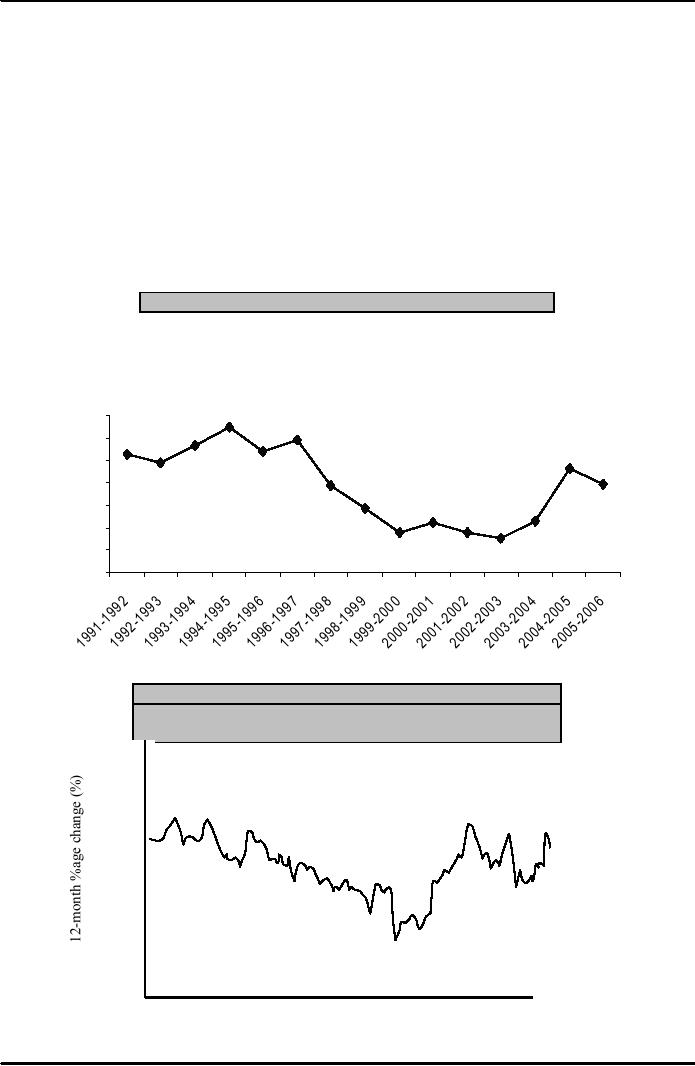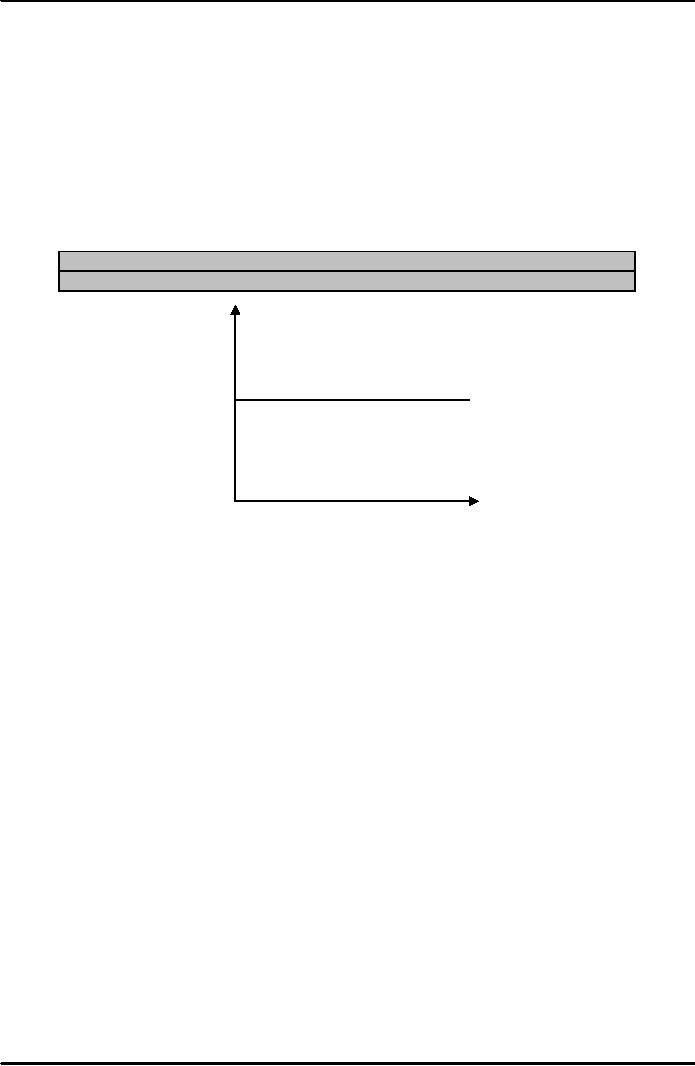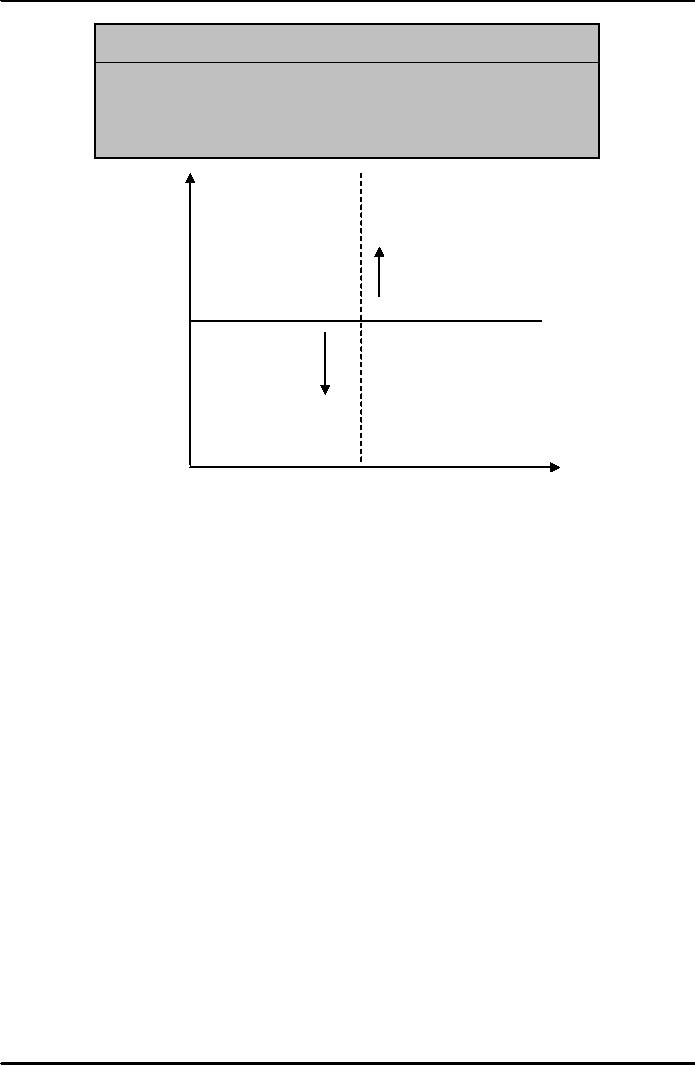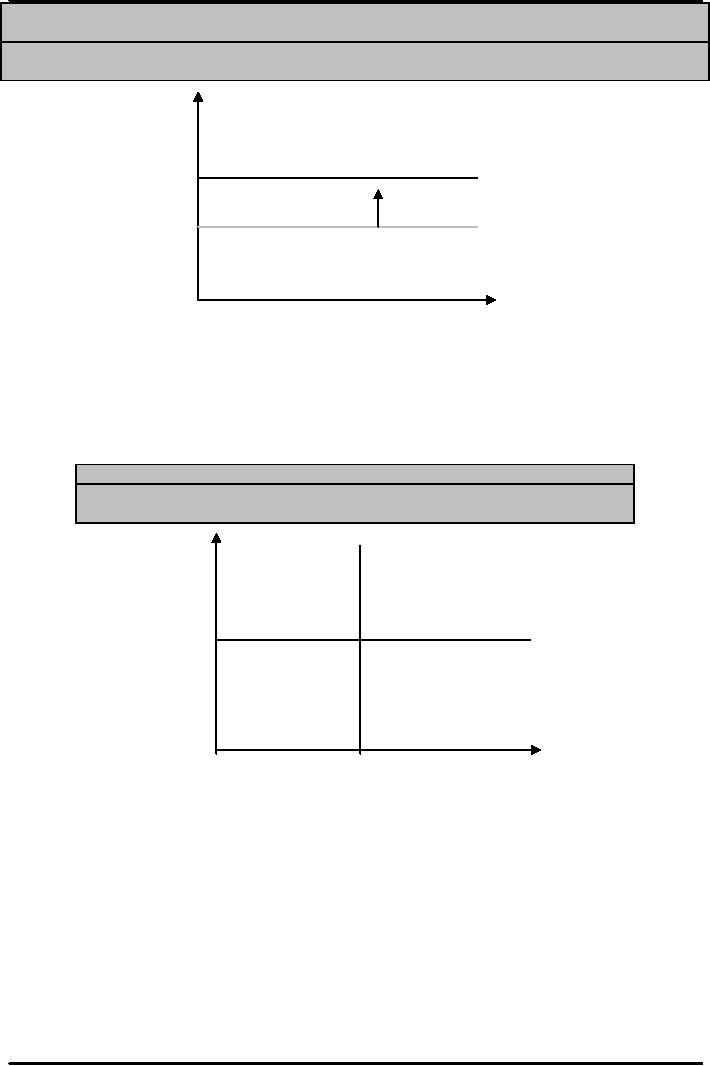 |
THE AGGREGATE SUPPLY CURVE:Inflation Shocks |
| << THE AGGREGATE DEMAND CURVE:Shifting the Aggregate Demand Curve |
| EQUILIBRIUM AND THE DETERMINATION OF OUTPUT AND INFLATION >> |

Money
& Banking MGT411
VU
Lesson
43
THE
AGGREGATE SUPPLY
CURVE
The
aggregate supply curve tells
us where on the aggregate demand
curve the economy will
end
up,
explaining the relationship between
inflation and real output in the
process.
The
short run aggregate supply
curve tells us where the economy will
settle at any particular
time
Long
run curve tells us the
levels of inflation and output the
economy is moving toward.
Inflation
persistence
Inflation
tends to change slowly; when
it is low one year it tends to be
low the next year,
and
when
it is high it tends to stay
high. This is called
inflation persistence
If
inflation remains steady
over shorter periods, while real
output adjusts, then the
short-run
aggregate
supply curve must be flat at
the current level of
inflation
Figure:
Inflation Statistics of
Pakistan
Inflation
statistics of Pakistan
14
12
10
8
6
4
2
0
Figure:
Inflation in the Euro Area,
1991-2004
This
figure shows the 12-month
change in the harmonized
index
of consumer prices for the 12 countries
of the euro area.
6
5
4
3
2
1
0
1992
1994
1996
1998
2000
2002
2004
135

Money
& Banking MGT411
VU
Inflation
is persistent for two
reasons
First,
when people expect inflation to
continue, they adjust their
prices and wages
accordingly.
When
people expect inflation in the near
future they raise wages
and prices in a way
that
causes
the inflation they expect to
occur.
Therefore,
current inflation is at least
partially determined by expected
inflation
Inflation
is persistent for two
reasons
Second,
not all wage and price decisions
are made at the same
time.
Price
and wage adjustments are
staggered, and this slows
down the adjustment process
causing
persistence in inflation
The
fact that inflation is persistent
means that it is fixed in the short
run, so the short-run
aggregate
supply curve is horizontal at the
current level of
inflation.
Figure:
Short Run Aggregate Supply
Curve
Inflation
persistence means the short run
aggregate supply curve is
horizontal.
Inflation
(�)
Current
Inflation
Short
Run Aggregate Supply Curve
(SRAS)
Output
(Y)
Firms
simply do not adjust the rate of their
price increases in the short run;
instead, they
adjust
the quantities they produce and
sell.
Over
periods of several years or more, inflation
does change, shifting the
short-run
aggregate
supply curve up or
down
Shifts
in the Short-Run Aggregate Supply
Curve
There
are two reasons why the
short run aggregate supply
curve can shift
Deviations
of current output from
potential output, causing changes in
inflation
Changes
in external factors driving production
costs
Output
Gaps
When
current output equals
potential output so that there is no
output gap, the short-run
aggregate
supply curve remains
stable
But
when current output rises
above or falls below potential
output, so that an output
gap
develops,
inflation will rise or
fall.
136

Money
& Banking MGT411
VU
Figure:
Shifts in the Short Run Aggregate
Supply Curve
Response
to an Output Gap
When
current output rises above
potential output, creating
an
expansionary
output gap, the short run aggregate
supply curve shifts
upward.
When current output falls
below potential output,
creating a
recessionary
output gap, the short run aggregate
supply curve shifts
downward.
Inflation
(�)
When
current output
is
above than the
potential
output, the
SRAS
shifts up
Current
SRAS
Inflation
When
current
output
is below
the
potential
output,
the SRAS
shifts
down
Potential
Output
(Y)
Output
When
current output is below
potential output, part of the
economy's capacity is idle, and
firms
tend
to raise their prices and
wages less than they
did when current output
equaled potential
output.
When
current output exceeds
potential output, the opposite
happens; firms increase
their prices
and
wages more than they would
if they were operating at normal
levels
Thus
when current output deviates
from potential output,
inflation adjusts, and the effect
takes
time
to be felt.
Economists
have differing views on how
quickly inflation reacts and the
short-run aggregate
supply
curve shifts.
Those
who believe in flexible
prices think it happens
quickly,
While
those who emphasize that
many price and wage decisions involve
long-term contracts
think
the adjustment is sluggish.
Inflation
Shocks
An
inflation shock is a change in the
cost of producing output and
causes the short-run
aggregate
supply curve to
shift.
This
can be the result of changes
in the cost of raw materials or labor, or
(as is most common) a
change
in the price of energy.
A
positive inflation shock
causes the short-run aggregate
supply curve to shift
upward, causing
inflation
to rise
137

Money
& Banking MGT411
VU
Figure:
Shifts in the Short-Run Aggregate
Supply Curve
Response
to an inflation shock
A
rise in labor costs, the prices of
raw materials or expected future level of
inflation creates an
inflation
shock
that shifts the SRAS upward,
causing inflation to rise.
Inflation
(�)
Positive
Inflation Shock
An
increase in the cost
of
production
shifts the SRAS up
Output
(Y)
The
Long-Run Aggregate Supply
Curve
In
the long run the economy moves to the
point where current output
equals potential
output,
while
inflation is determined by money
growth
The
long-run aggregate supply
curve is vertical at the point where
current output equals
potential
output.
Figure:
The Long Run and Short
Run Aggregate Supply
Curves
The
long run aggregate supply
curve is vertical at the point where
current output
equals
the potential output.
Inflation
(�)
LRAS
Current
SRAS
Inflation
Potential
Output
Output
(Y)
Changes
in expected inflation operate like cost
shocks, shifting the short-run
aggregate supply
curve
up and down.
For
the economy to remain in long-run
equilibrium, then, in addition to
current output
equaling
potential
output, current inflation
must equal expected
inflation
At
any point along the long-run
aggregate supply curve,
current output equals
potential output
and
current inflation equals expected
inflation
Potential
output is constantly rising as a
result of investment and technological
improvements
(the
sources of economic growth), which
increase the normal output
level.
Changes
in the economy's productive capacity
will shift the long-run
aggregate supply
curve;
increases
will shift it right and
decreases will shift it
left.
138
Table of Contents:
- TEXT AND REFERENCE MATERIAL & FIVE PARTS OF THE FINANCIAL SYSTEM
- FIVE CORE PRINCIPLES OF MONEY AND BANKING:Time has Value
- MONEY & THE PAYMENT SYSTEM:Distinctions among Money, Wealth, and Income
- OTHER FORMS OF PAYMENTS:Electronic Funds Transfer, E-money
- FINANCIAL INTERMEDIARIES:Indirect Finance, Financial and Economic Development
- FINANCIAL INSTRUMENTS & FINANCIAL MARKETS:Primarily Stores of Value
- FINANCIAL INSTITUTIONS:The structure of the financial industry
- TIME VALUE OF MONEY:Future Value, Present Value
- APPLICATION OF PRESENT VALUE CONCEPTS:Compound Annual Rates
- BOND PRICING & RISK:Valuing the Principal Payment, Risk
- MEASURING RISK:Variance, Standard Deviation, Value at Risk, Risk Aversion
- EVALUATING RISK:Deciding if a risk is worth taking, Sources of Risk
- BONDS & BONDS PRICING:Zero-Coupon Bonds, Fixed Payment Loans
- YIELD TO MATURIRY:Current Yield, Holding Period Returns
- SHIFTS IN EQUILIBRIUM IN THE BOND MARKET & RISK
- BONDS & SOURCES OF BOND RISK:Inflation Risk, Bond Ratings
- TAX EFFECT & TERM STRUCTURE OF INTEREST RATE:Expectations Hypothesis
- THE LIQUIDITY PREMIUM THEORY:Essential Characteristics of Common Stock
- VALUING STOCKS:Fundamental Value and the Dividend-Discount Model
- RISK AND VALUE OF STOCKS:The Theory of Efficient Markets
- ROLE OF FINANCIAL INTERMEDIARIES:Pooling Savings
- ROLE OF FINANCIAL INTERMEDIARIES (CONTINUED):Providing Liquidity
- BANKING:The Balance Sheet of Commercial Banks, Assets: Uses of Funds
- BALANCE SHEET OF COMMERCIAL BANKS:Bank Capital and Profitability
- BANK RISK:Liquidity Risk, Credit Risk, Interest-Rate Risk
- INTEREST RATE RISK:Trading Risk, Other Risks, The Globalization of Banking
- NON- DEPOSITORY INSTITUTIONS:Insurance Companies, Securities Firms
- SECURITIES FIRMS (Continued):Finance Companies, Banking Crisis
- THE GOVERNMENT SAFETY NET:Supervision and Examination
- THE GOVERNMENT'S BANK:The Bankers' Bank, Low, Stable Inflation
- LOW, STABLE INFLATION:High, Stable Real Growth
- MEETING THE CHALLENGE: CREATING A SUCCESSFUL CENTRAL BANK
- THE MONETARY BASE:Changing the Size and Composition of the Balance Sheet
- DEPOSIT CREATION IN A SINGLE BANK:Types of Reserves
- MONEY MULTIPLIER:The Quantity of Money (M) Depends on
- TARGET FEDERAL FUNDS RATE AND OPEN MARKET OPERATION
- WHY DO WE CARE ABOUT MONETARY AGGREGATES?The Facts about Velocity
- THE FACTS ABOUT VELOCITY:Money Growth + Velocity Growth = Inflation + Real Growth
- THE PORTFOLIO DEMAND FOR MONEY:Output and Inflation in the Long Run
- MONEY GROWTH, INFLATION, AND AGGREGATE DEMAND
- DERIVING THE MONETARY POLICY REACTION CURVE
- THE AGGREGATE DEMAND CURVE:Shifting the Aggregate Demand Curve
- THE AGGREGATE SUPPLY CURVE:Inflation Shocks
- EQUILIBRIUM AND THE DETERMINATION OF OUTPUT AND INFLATION
- SHIFTS IN POTENTIAL OUTPUT AND REAL BUSINESS CYCLE THEORY